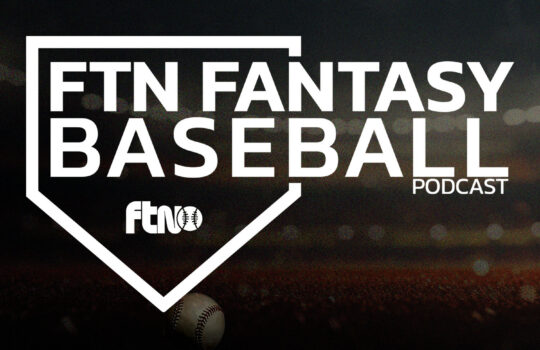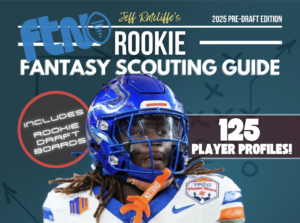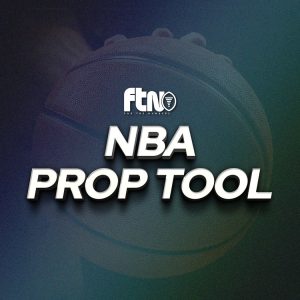
Welcome back to the new norm! This feature is to focus on League of Legends (LOL)/Counter-Strike: Global Offensive (CGSO) lineup construction for ESports DFS. One of the most important points we need to make is stacking, which is the ONLY WAY to be successful in LOL and CSGO. In regard to stacking, focus on these key points:
- Look at the Las Vegas odds.
- Look for the highest implied total (kills) by the top teams (mainly for LOL).
- Focus on the best kill/death ratios for CSGO.
League of Legends
Let's focus on the strategy used for my big wins in 2020. My focus is tournaments ranging from 150-500 total entries, where I can max 4-15 entries. We will start with LOL. For those of you who aren’t familiar, there are a ton of different leagues going on. I’m going to focus on the League of Legends European Championship (LEC), League of Legends Championship Series (LCS), the League of Legends Pro League (LPL), and League of Legends Champions Korea (LCK).
These are the 4 main leagues in League of Legends. There’s a different strategy for the LEC and LCS, which are the European and North American leagues. In these regular-season matchups, they only play best of one each matchup. Using the past 20 GPPs associated with the LEC and LCS, we focus on the most successful stacks.
My first piece of research is looking at the Las Vegas odds and focusing on the heavy favorites. In most slates, the heavy favorites are priced the highest. Throughout the day, I focus on any line changes and adjust accordingly. With most Las Vegas odds, you can also find the projected kill totals. Usually, the highest kill total is the chalkiest of the slate and is usually only going to be used in 1-2 lineups. The sweet spot is focusing on the two lower favorites or the other two higher kill total teams. I usually pair it with a slight favorite or an underdog whose spread is close to their opponent.
Let’s get to the fun part. After choosing what teams I want to target in my lineups. What next?
Well in LOL, we focus on our lineup builds with a Captain, TOP, JNG, MID, ADC, SUP, and a TEAM spot. In our CAPTAIN spot, we focus on two positions to fill this spot and it’s ADC or MID ONLY. From time to time, people go TOP or JNG at Captain, but this is NOT optimal, and I don’t recommend it. It gets lucky from time to time but go ADC or MID at Captain and move on. I tend to look at game logs and see who’s been carrying the team to victory. Don’t look at the last 3 matches but closer to the last 10 matches. Also, look to see how well they did in the past against the team they’re playing against.
Now that we narrowed that down, let's focus on the actual lineup build. In my big wins for these best-of-one slates, the optimal builds are usually 3-3 or 4-2. I understand there are 7 spots, including the team spot, but I ignore the team spot and focus on that at the end by choosing one of the two teams I’m stacking in the team spot. In these best-of-one matches, we focus on MID or ADC at Captain followed by the TOP or SUP position and then the JNG spot. The remaining spots should be filled by the other team you are stacking that fits the salary.
In my previous big wins, here were my builds and what I tend to focus on every slate:
- CAPTAIN – ADC – Team 1
- TOP – Team 1 (or Team 2)
- JNG – Team 1
- MID – Team 2
- ADC – Team 2
- SUP – Team 2 (or Team 1)
- TEAM – Team 1 (or Team 2)
This is usually the optimal build that I’d focus on for the best-of-one matches in LCS and LEC.
For the best-of-three LPL and LCK, this is a different monster. A similar strategy with the CAPTAIN spot, but I lean more toward a 4-2 stack. My favorite and most profitable stacks are as follows:
- CAPTAIN – ADC – Team 1
- TOP – Team 1
- JNG – Team 1
- MID – Team 1
- ADC – Team 2
- SUP – Team 2
- TEAM – Team 2
This is a similar strategy to what I do for my research, but we focus on the 4-2 stack for this. You can interchange the TOP and SUP spot with either team or do a second lineup like this to hedge it a bit. The correlation between ADC and SUP is usually the way to go since they are paired with each other throughout most of the game:
- CAPTAIN – ADC – Team 1
- TOP – Team 2
- JNG – Team 1
- MID – Team 1
- ADC – Team 2
- SUP – Team 1
- TEAM – Team 2
Another strategy that works is this one:
- CAPTAIN – MID – Team 1
- TOP – Team 2 (or Team 2)
- JNG – Team 1
- MID – Team 2
- ADC – Team 1
- SUP – Team 1 (or Team 2)
- TEAM – Team 2
Lastly, this one has also hit a few times! This is a wild one, as it's mainly for GPPs and could be used in a 500-person contest:
- CAPTAIN – ADC or MID – Team 1
- TOP – Team 2
- JNG – Team 2
- MID – Team 2
- ADC – Team 2
- SUP – Team 1
- TEAM – Team 1
It must be emphasized that contest selection is key. I’ve cashed in the 500-person contests with a lineup but not the 30,000-person contests with the same lineup. Also, I’ve hit big on those 500-person contests with a lineup that produces only a slight return on investment in a big GPP. Focus on the smaller tournaments and HEDGE. I love to hedge. These slates are small and if you have the bankroll, use 10 lineups, focus on the above combos, and mix and match to use different teams. I will sometimes use the same team but switch the TOP and SUP spots and lock that second lineup in the same tournament.
We have one last point to focus on.
I want to stress the importance of #hedgelife. Please dive into this, as it is very important to my success in Esports.
As previously mentioned, my focus for this article is around my plan for these slates. I have gone into this plenty in the past, but I want to discuss #hedgelife and what this means. When I say hedge, I really mean that we want to have action on both sides of the match. I will provide a ranking of my favorite stacks, but just because a stack is ranked last, doesn’t mean I’ll have them in only one of my lineups. A few people have been lucky with game stacking in some of these slates, which means having both teams playing each other as your lineup. I do not recommend this approach, as it doesn’t hit often. Make sure to follow my Twitter for updates on starting lineups and any changes that I will be making as I research later on throughout the day. Lastly, I want to touch on contest selection. Contest selection is the most important thing to me and it’s the reason I hit big more often than not. A lot of DFS players focus on playing in contests with 35,000 people because it’s only $10 to enter and they feel it’s easy to win money. I can’t tell you how many times I’ve had a takedown and it barely cashed in the big GPP. Focus on contests with around 250-300 people, where you can max 7-10 entries. Use the #hedgelife strategy and max enter this contest and use the strategy in this article to profit. Trust me on this one.
Something else I wanted to touch on was the process. I’ve mentioned this quite a few times, but I thought I’d break it down further.
- Contest selection — If you don’t follow me on Twitter, please make sure you do. I’ve been tweeting my favorite contests for people to focus on, on a nightly basis. Find a way to do 10 lineups and focus on contests with under 500 people.
- #HedgeLife — I took a deep dive into this above, but here’s what I mean. If you do a 4-3 BLG-SB line, make sure you also do a 4-3 SB-BLG line. Do one line of four-man SB with SB CPT then in your next line, do a four-man BLG with BLG CPT. Covers you on both grounds.
- #HedgeLife part deux — If you’re doing 10 lineups with five BLG stacks, make sure to do 2-3 DMO stacks to hedge that game.












































 New York Jets
New York Jets  New England Patriots
New England Patriots  Miami Dolphins
Miami Dolphins  Buffalo Bills
Buffalo Bills  Pittsburgh Steelers
Pittsburgh Steelers  Cleveland Browns
Cleveland Browns  Cincinnati Bengals
Cincinnati Bengals  Baltimore Ravens
Baltimore Ravens  Tennessee Titans
Tennessee Titans  Jacksonville Jaguars
Jacksonville Jaguars  Indianapolis Colts
Indianapolis Colts  Houston Texans
Houston Texans  Las Vegas Raiders
Las Vegas Raiders  Los Angeles Chargers
Los Angeles Chargers  Kansas City Chiefs
Kansas City Chiefs  Denver Broncos
Denver Broncos  Washington Commanders
Washington Commanders  Philadelphia Eagles
Philadelphia Eagles  New York Giants
New York Giants  Dallas Cowboys
Dallas Cowboys  Minnesota Vikings
Minnesota Vikings  Green Bay Packers
Green Bay Packers  Detroit Lions
Detroit Lions  Chicago Bears
Chicago Bears  Tampa Bay Buccaneers
Tampa Bay Buccaneers  New Orleans Saints
New Orleans Saints  Carolina Panthers
Carolina Panthers  Atlanta Falcons
Atlanta Falcons  San Francisco 49ers
San Francisco 49ers  Seattle Seahawks
Seattle Seahawks  Los Angeles Rams
Los Angeles Rams  Arizona Cardinals
Arizona Cardinals 








 Boston Celtics
Boston Celtics  Brooklyn Nets
Brooklyn Nets  Philadelphia 76ers
Philadelphia 76ers  New York Knicks
New York Knicks  Toronto Raptors
Toronto Raptors  Chicago Bulls
Chicago Bulls  Detroit Pistons
Detroit Pistons  Milwaukee Bucks
Milwaukee Bucks  Cleveland Cavaliers
Cleveland Cavaliers  Indiana Pacers
Indiana Pacers  Orlando Magic
Orlando Magic  Atlanta Hawks
Atlanta Hawks  Charlotte Hornets
Charlotte Hornets  Miami Heat
Miami Heat  Washington Wizards
Washington Wizards  Denver Nuggets
Denver Nuggets  Minnesota Timberwolves
Minnesota Timberwolves  Oklahoma City Thunder
Oklahoma City Thunder  Portland Trail Blazers
Portland Trail Blazers  Utah Jazz
Utah Jazz  LA Clippers
LA Clippers  Golden State Warriors
Golden State Warriors  Los Angeles Lakers
Los Angeles Lakers  Phoenix Suns
Phoenix Suns  Sacramento Kings
Sacramento Kings  Dallas Mavericks
Dallas Mavericks  Houston Rockets
Houston Rockets  Memphis Grizzlies
Memphis Grizzlies  New Orleans Pelicans
New Orleans Pelicans  San Antonio Spurs
San Antonio Spurs 












